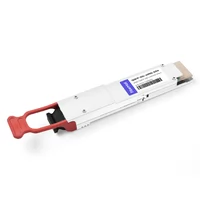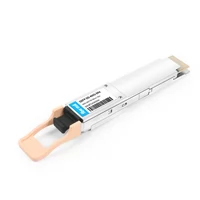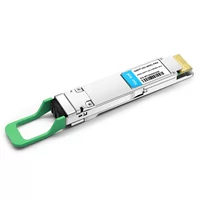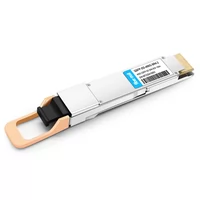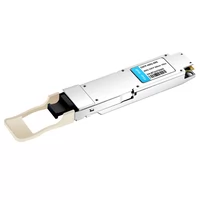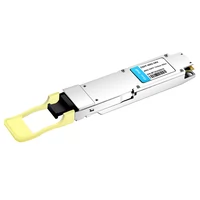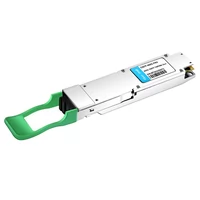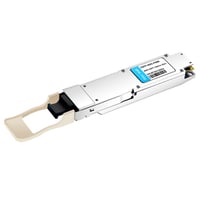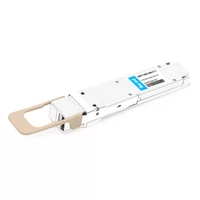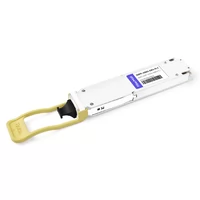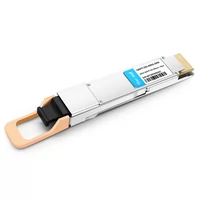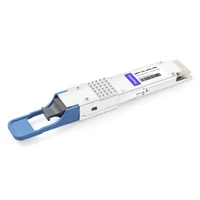Given the evolving nature of the networking industry and its growing application scope, the demand for higher bandwidth and data rate has led to the invention of new optical transceivers. A case in point is the 400G Ethernet transceiver, an important device for improving the network capacity in data centers, enterprise networks, and telecommunication systems. This guide is dedicated to yours truly, where I will provide detailed views of 400G optical transceivers – structure, functionality, and application areas in various industries. Explanation of design and function of these devices, and high-speed data transfer provided in the article, advanced features such as interoperability, low cost and power are the main issues addressed. This article offers a good understanding of 400G technology and its relevance in modern connectivity, regardless of whether One is a network engineer or IT practitioner or who has a keen interest in the development of optical networking.
Table of Contents
ToggleWhat is a 400G Ethernet Transceiver?

Overview of 400G Transceiver Technology
A 400G Ethernet transceiver can be defined as an incarnation of the data transmission unit, which operates at 400 Gigabits per second (Gbps) speeds. It uses different physical layer interface technologies such as Short Range (SR), Long Range (LR), and Extended Range (ER) optics designed for various distance and application requirements. These transceivers employ multiple optical wavelengths and advanced modulation techniques like PAM4 to increase bandwidth over optical fibers. Significant parts include the laser transmitter, the photodiode, and the digital signal processor, all of which are crucial to its performance. 400G transceivers are useful in increasing bandwidth within data centers and connecting high-speed links to telecommunications networks.
Key Features of 400G Ethernet Transceivers
400G Ethernet transceivers boast multiple embedded features, which define their enhanced performance and appropriateness to complex approaching networks.
- High Data Rate: The design of these transceivers operational at 400 Gbps is to fulfill the huge bandwidth needs of modern service provider and data centers in comparison to other previous generations like 100G which offered a lesser bit of throughput.
- Multiple Form Factors: 400G Transceivers come in multiple and different form factors such as QSFP-DD and OSFP both of which make it possible to achieve higher port density and are backward-compatible with current infrastructures for easy modernization.
- Wavelength Division Multiplexing (WDM): Some or most of 400G transceivers contain Wavelength division multiplexing (WDM) technology, where multiple data signals are sent over a single fiber optic cable so as to expand the bandwidth capacity and this is critical for the long-haul and metro applications as fiber usage is maximized.
- Advanced Modulation Techniques: Due to the introduction of PAM4 modulation, there comes an efficient doubling up of the effective per wavelength encoded bandwidth paged up with dual bits encoded per one symbol. This means that the same amount of data is transmitted more efficiently without increasing the bandwidth needed for usage on more fiber.
- Distance Coverage: Roughly different types of 400G transceivers span calibrated to carry out one common task, namely Long, Short, and Extended Range EWM. For example a login page of the user defines more than 100 meters while the LR can go as much as 10 kilometers.
- Technological Advances: Owing to the development of technology, 400 G transceivers are also made with energy efficiency in terms of output power more into walk theories. These are stamped at around 7-15watts and hence more economical in regard to bulk usage.
- Standardization: Following this, all industry protocols indicate that 400 transceivers are used in combination with many other devices, enabling flexibility and safety of investments for networking operators.
It is these features that determine the demand for 400G Ethernet transceivers which are integral to the development of high speed network that meet the adequate data transfer demand for cloud computing, artificial intelligence and big data applications.
How 400G Transceivers Work in Modern Networks
400G transceivers are prominent in modern networks as they enhance the transmission of data over a wide bandwidth. To do so, the transceivers make use of Multiplexing, whereby several data streams are brought together and sent through one optical cable, thus increasing the rate of data transfer. The modulation of data using standard PAM4 modulation techniques enables these transceivers to achieve x2 data rate per fiber without needing more fiber reinforcement.
Different transceivers are constructed using single mode and multimode fibers using appropriate cantilever resources for that specific deployment mode. They make use of optical amplifiers and dispersion compensation techniques to maintain quality at long reaches of communication. They also utilize the approach of adaptive optics, which improves performance through compensation to the varying conditions on the network used to transmit data. All in all, 400G transceivers are critical in handling the increasing bandwidth requirements for cloud computing, video-on-demand, and other forms of large data throughputs.
Comparing Different 400G Transceiver Form Factors

QSFP-DD: Quad Small Form Factor Pluggable Double Density
The QSFP-DD transceiver is designed to achieve 400G transmission by increasing the number of channels, which are 2 more than that of the standard QSFP. This facilitates SOSA implementation without forcing the QSFP interface to be replaced. The design of the QSFP-DD form factor supports both passive and active copper cables and optical fibers, allowing flexibility in different networking scenarios. Further, it incorporates an improved thermal management mechanism in order to optimize performance under heavy data operations. Being small and very dense makes it perfect for HPC data centers, and it deploys optimally in space with great bandwidth requirements.
OSFP: Octal Small Form Factor Pluggable
The OSFP (Octal Small Form Factor Pluggable) transmits an efficient 400G transmission, which is designed in the form of an Octal, and includes support for eight separate data channels. Enhancements made in this design permit significant bandwidth increases while ensuring the already present infrastructure is utilized to the maximum. OSFP targets high-density areas, as it provides advanced heat management solutions allowing operation in harsh working conditions under maximum load. In addition, it is ideal due to its supportive nature of both copper and optical cables which is most often the case even in data centers and high performance computing situations where speed and space is a premium.
Other Form Factors: CFP8 and COBO
The CFP8 (I.e., C Form-factor Pluggable 8 (Transceiver Module) provides 400G interfaces in small and robust form factors that support a number of different transmission technologies. There are four channels in this transceiver operating at 100G each thanks to modern modulation techniques, which enhance the bandwidth compression and minimize the power used. The design of the CFP8 form factors embraces onboard cooling provisions that enhance the working in networking systems with high usage densities. Its architecture is also backward compatible with the previous generations of the CFP standard to ease network deployment.
Standard COBO (Consortium for On-Board Optics) is a radically new approach to optical communication because it encompasses the on-board optics as part of the circuit instead of augmenting it individually. There are some significant advantages in this new approach as body dimensions are diminished to minimal levels, the quality of signals is improved and consequently, various performance benchmarks are optimized. Modules of COBO can be used for the transmission of high-capacity data for various distances and types of cabling, clearly making them more versatile in various network configurations. In a quest to meet the increasing need for data while simplifying the design and distribution of systems, COBO technology has been introduced in the market, especially in the optical transceivers industry.
What Are the Applications of 400G Transceivers in Data Centers?
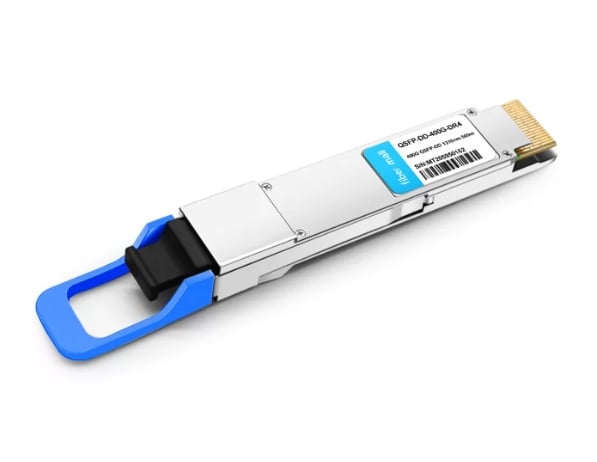
High-Speed Data Transmission
High-speed data transmission is an integral element of modern data centers since the volume of data owing to the growing number of users and processing power also increases exponentially. In relation to such applications, 400G transceivers are considered to be an indispensable solution to maintain high bandwidth requirements in a wide variety of fields, such as cloud computing, artificial intelligence, and big data.
For example, in such environments as data centers, 400G transceivers are installed to connect switches and servers in a rack, enabling data transfer of over 10 terabits per second per rack. This feature greatly cuts down on delays, making it efficient for applications that are sensitive to delays. In addition, it has been reported that the application of 400G technology should reduce the power consumption in transceivers by up to 70% with respect to every Gigabit as compared to earlier generations, making it cost and environmentally friendly.
Similarly, these high bandwidth 400G transceivers are also capable of utilizing advanced modulation formats such as PAM4 that can deliver twice the data rate per channel without extending the bandwidth. This improvement is very important for high-frequency trading applications where every microsecond is crucial in the execution of trades. With the change of data centers to structures operating at higher speeds, the integration of 400G transceivers will become a necessity for faster increases in data throughput throughout the network.
Optimizing Bandwidth and Port Density
Moreover, optimizing the bandwidth and port density in a data center is one of the key ways of maximizing resource utilization and ensuring the smooth flow of data. It is more cost-effective for an organization to use 400G transceiver solutions as it helps save more space and increases transport capacity. Such techniques for example the Multi-Rate Interface (MRI) permit operating several channels in a single physical port leading to an effective increase in bandwidth without additional hardware requirements. It is also possible to extend the spine-leaf architecture and implement it as a tiered model within additional leaf networks, which increases demand scalability and flexibility, therefore improving load balancing and minimizing the chances of congestion. Implementing such strategies increases the performance of the system and, at the same time, affects the cost structure by underpinning lower capital investments and enhancing power savings.
Compatibility with Existing Network Infrastructure
When bringing in 400G transceiver technologies, consideration of how they belong to the pre-existing network structure is of utmost priority. The majority of contemporary network elements, be it routers, switches, or optical transport infrastructures, are designed with industry-standard 100G transceivers and their modular patterns to allow plug-in of other types of transceivers. Prominent vendors also include backward compatibility functions so that 400G modules can work with current technologies, such as 100G and 10G, without any performance interruptions. Furthermore, various standardized protocols such as Ethernet and Optical transport networks reduce obstacles to existing system integration. Organizations do take into account the presence of emerging new hardware in a network and plan its installation with gradual performance tests to ensure that the required goals are retained and the integrity of network operations structure is not compromised during the changing of systems.
Understanding 400G Optical Transceivers
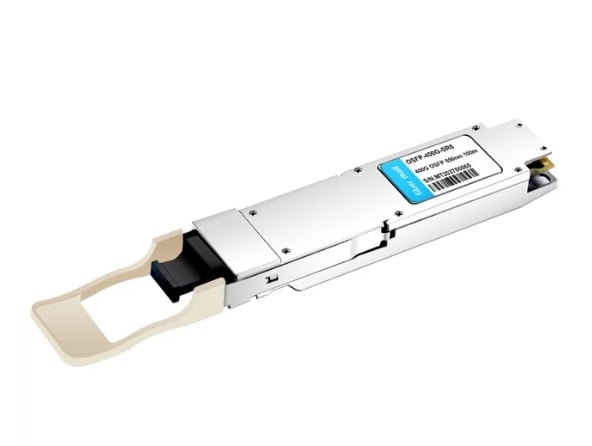
Types of 400G Optical Transceivers
400G optical transceivers are usually of 5 various types that depend on creation and the distance from which such systems are intended to work. Some examples of the most common types are:
- QSFP-(Quad Small Form-factor Pluggable Double Density): Supports up to 400G Ethernet; very much suited to high-density settings.
- OSFP: Provides the same functionality as the QSFP-DD but in a more bulky design, improving heat dissipation.
- CFP8: It supports optical interfaces and is intended for high-speed work.
- PAM4: A data communication scheme employed in transceivers to leverage the data rate twice over the bandwidth present, thus increasing the data throughput.
All these types have their specifications and meet different needs to enhance the operation of networks.
Performance Metrics: Data Rate and Transmission Distance
The performance metrics of 400G optical transceivers must include at least two parameters, namely data rate and transmission distance. The data rate of a transceiver usually in gigabits per second is a measure of how much information can be carried in a particular transmission node. These transceivers with a standard of 400G are able to handle an order of magnitude more data relative to the preceding models.
Transmission distance is also termed as the distance without any significant distortion of the signal or any dip in its performance. These distances depend on the type of optical fiber used, whether it is multimode or single mode. For example, 400g multimode fibers support a range of up to 150 meters, while single-mode fibers can increase range effectiveness to extremely distant distances of several kilometers. These measures are important for the appropriate selection of the components during construction as well as network deployment.
Cable Types Used with 400G Transceivers
Choosing the appropriate types of cables is very important in achieving the best use out of the 400G optical transceivers. Commonly used cables are as follows: The essential cables are:
- Single-mode Fiber (SMF): In this type there is only one transmit ya it was designed for long range transmition which allows the transmission of data transferwith connections above 500 meters. This*Twenty-eight small-core diameter differential glass fiber is designed with particular small core diameter unfortunately as single mode radial propagation is limited it cuts down dispersion thus assisting most optical signals over long distances .
- Multimode Fiber (MMF): This is mostly used in short distance applications. Multimode fiber is capable of supporting high data rate of up to 400G but is only effective for reliable transmission distance of a little over 150 meters. Its greater core diameter permits the simultaneous transmission of multiple light modes and is useful for intra- building and inter- building connections.
- Active Optical Cables (AOC): These are a particular type of active cable where the cable assembly itself contains optical transceivers. Aocs are designed for high bandwidth short distance applications and are an inexpensive means of interconnecting equipment in the datacentre which makes them ideal for 400G applications over distances typically not exceeding 100 meters.
In conclusion, the selection of single-mode fiber, multimode fiber, and active optical cables will entirely depend on the nature of the work that the network is to do, particularly its distance, bandwidth, and cost of installation.
FAQs About 400G Ethernet and Optical Transceivers
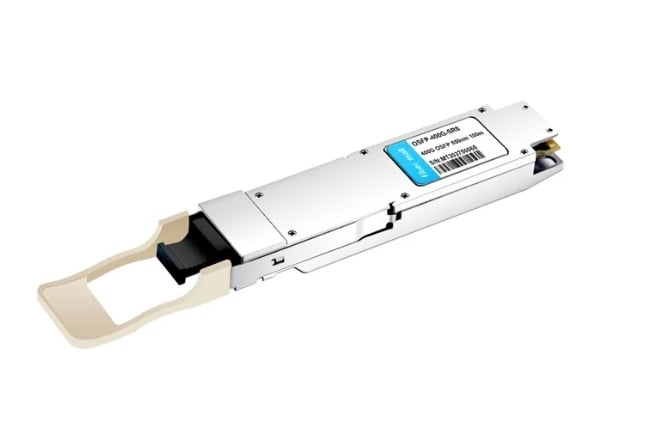
What Is the Difference Between 100G and 400G Transceivers?
The throughput is the main distinction between 100G and 400G transceivers. Unlike 100G transceivers, which are able to transmit data at one given speed, in this case – the capacity 400G transceivers are able to do so and free up space for more traffic within the transmission systems and improve efficiency. There is also the fact that 400G transceivers are usually built to support more advanced modulation formats, which are useful for delivering efficiency in densely populated areas and over longer distances. In addition, 400 G transceivers are also known to consume less power per gigabit than the usual 100 G transceivers as the technology improves, making them better options for contemporary data center use.
How to Choose the Right 400G Transceiver for Your Network?
A 400G transceiver has to be selected with many factors in mind to ensure that the performance obtained is reasonable versus the cost. Below are some of the highlights:
- Transmission Distance: Establish the furthest physical separation that lies between network elements. Depending on the distance, different transceivers work best; short-range SR (70m) multimode fiber goes best for short distances while long-range LR (up to 10km) single-mode fiber works best for long distances.
- Modulation Format: Analyze the modulation format in which the transceiver will be able to operate. More complex modulation formats or advanced PAM4 (4-Pulse Amplitude Modulation) techniques are used to help increase the bit rates and enhance the efficiency of design, especially in high-density designs.
- Connector Type: The connector compatibility is vital to realize an easy connection to the already existing layout. The choice of SC, LC, external/intermediate and initiator connectors among others is determined by cabling type and application.
- Power Consumption: Measures the transceiver operational capacity on energy. This is because when a ‘green’ focus is adapted in data centres, adopting a lower consumption per any gigabit will in turn lessen the tax bills incurred returning the system to use, an overall efficiency gaining function.
- Compatibility and Standards: Check if existing networking devices and protocols can be integrated. Ensure the transceiver’s compliance with the standards provided by the organizations like IEEE, OIF for the sake of interworking with other networks.
So by taking into consideration the factors stated above, network administrators are able to choose the best 400G transceivers which meet their infrastructural needs without compromising performance and data transmission.
What Are the Future Trends in 400G Technology?
The future of 400G technology perspective looks toward reasonable development and fruitful deployment owing to certain trends which have been identified.
- Growing Uptake of Coherent Technology: Given the level of network traffic and growth trends, coherent optical technology will be vital in increasing the throughput and distance of 400G networks. This technology enables covering long distances, thereby meeting the needs of cloud computing and the Internet.
- The Step Up of 800G and Above: The industry is already looking ahead to a time when the transition from 400G to 800G technologies and way beyond that will be a normal world trend. Through this shift, photonic integration will change how data is transmitted such that the energy consumed per unit of transmitted information will decrease.
- Ameliorated Modularization and Intelligence of Network: Future trends shows that network management will deeply be driven by automation and artificial intelligence (AI) technologies. These technologies will remove operational drudgery, increase fault finding and overall network operation performance resulting in improved networking environments which are flexible and more fault tolerant.
As these changes take place, they will promote development in the 400G technologies and also the planning of next generation of networking applications and infrastructures.
Reference Sources
Frequently Asked Questions (FAQs)
Q: What is a 400G QSFP-DD Transceiver?
A: The 400G QSFP-DD transceiver is an advanced optical module that is used for 400 gigabit ethernet connectivity. QSFP-DD which stands for Quad Small Form-factor Pluggable Double Density was introduced to allow for higher data rates than its predecessors in the QSFP standards.
Q: What are the main types of 400G optical transceivers?
A: The main types of 400G optical transceivers include 400G QSFP-DD, 400G OSFP, SR8, DR4, LR4, and FR4. There are different types of transceivers in terms of their reach and application: short-reach – 100m, medium reach – over 1km, and long reach – up to 10km.
Q: How does a 400g transceiver compare with a 400g sqft-max rate transceiver?
A: A 400G OSFP is also aimed at gigibit ethernet but in a slightly different looking packaging. Also 400G OSFP transistors can support 400Gbps transmission rate like 400G QSFP-DDs but due to OSFP structure there is upper limit on the power consumption due thermal management stability at the minimum OSFP limits in contrast to QSFP DD.
Q: What is the prescribed reach of a 400G DR4 transceiver?
A: A 400G DR4 transceiver, as one of the 400G modules that use a four-element design, typically supports a reach of up to 500 meters in a single model fiber. This is done by using four optical channels (DR) modulated in PAM4 for the 400Gbps rate.
Q: What applications are made possible with 400G QSFP-DD transceivers, and how do these applications perform?
A: 400G QSFP-DD transceivers are utilized more often in data centers, high-performance computing, and telecommunication network infrastructures. It helps increase the data transfer speed and capacity in applications such as cloud computing, video-on-demand, and high-performance computing applications and analytics.
Q: In what applications are 400G SR8 transceivers used?
A: The 400G SR8 transceivers are short dreadful distance types that are normally used at distance ranges of about 100m over multimode fiber. They employ 8 channels for data transmission 50Gbps each and are mostly used in data centers connection.
Q: What are the advantages and drawbacks of transition to 400G Ethernet technology?
A: Transitioning to 400G Ethernet has a number of advantages among them being able to support wider as well as much lower latency bandwidth. It meets the usual data growth requirements as well as addressing the need for designing networks that are accustomed to go to the next generation of applications and services.
Q: Will it be possible to use 400G QSFP-DD transceivers with current QSFP28 ports?
A: No, 400G QSFP-DD transceivers are not intended for backwards compatibility with existing ports on domain QSRP28. The QSFP-DD is dedicated for 400G operations and does not work with existing interface without the suiting QSFP-DD.
Q: What is CWDM in the context of 400G switches?
A: CWDM means Coarse Wavelength Division Multiplexing. In the context of 400G optics, CWDM technology is the one that allows several optical signals to be brought together and put into one fibre in the effect enhancing the bandwidth capacity of the fibe optic link.
Q: What is a transceiver overview in 400G Ethernet solutions?
A: A transceiver overview in 400G Ethernet solutions relates to the description and details of the aspects concerning the transceiver modules such as type, 400g transceiver form factor, applications, and specifications. In this section explains in detail the different types of 400G transceivers available and hence assist the network engineers in choosing the best suited modules for their purpose.
Related Products:
-
 QSFP-DD-400G-ER4 400G QSFP-DD ER4 PAM4 LWDM4 40km LC SMF without FEC Optical Transceiver Module
$3500.00
QSFP-DD-400G-ER4 400G QSFP-DD ER4 PAM4 LWDM4 40km LC SMF without FEC Optical Transceiver Module
$3500.00
-
 QSFP-DD-400G-SR4 QSFP-DD 400G SR4 PAM4 850nm 100m MTP/MPO-12 OM4 FEC Optical Transceiver Module
$450.00
QSFP-DD-400G-SR4 QSFP-DD 400G SR4 PAM4 850nm 100m MTP/MPO-12 OM4 FEC Optical Transceiver Module
$450.00
-
 QSFP-DD-400G-FR4 400G QSFP-DD FR4 PAM4 CWDM4 2km LC SMF FEC Optical Transceiver Module
$500.00
QSFP-DD-400G-FR4 400G QSFP-DD FR4 PAM4 CWDM4 2km LC SMF FEC Optical Transceiver Module
$500.00
-
 QSFP-DD-400G-SR4.2 400Gb/s QSFP-DD SR4 BiDi PAM4 850nm/910nm 100m/150m OM4/OM5 MMF MPO-12 FEC Optical Transceiver Module
$900.00
QSFP-DD-400G-SR4.2 400Gb/s QSFP-DD SR4 BiDi PAM4 850nm/910nm 100m/150m OM4/OM5 MMF MPO-12 FEC Optical Transceiver Module
$900.00
-
 OSFP-400G-SR8 400G SR8 OSFP PAM4 850nm MTP/MPO-16 100m OM3 MMF FEC Optical Transceiver Module
$225.00
OSFP-400G-SR8 400G SR8 OSFP PAM4 850nm MTP/MPO-16 100m OM3 MMF FEC Optical Transceiver Module
$225.00
-
 OSFP-400G-DR4 400G OSFP DR4 PAM4 1310nm MTP/MPO-12 500m SMF FEC Optical Transceiver Module
$800.00
OSFP-400G-DR4 400G OSFP DR4 PAM4 1310nm MTP/MPO-12 500m SMF FEC Optical Transceiver Module
$800.00
-
 OSFP-400G-FR4 400G FR4 OSFP PAM4 CWDM4 2km LC SMF FEC Optical Transceiver Module
$900.00
OSFP-400G-FR4 400G FR4 OSFP PAM4 CWDM4 2km LC SMF FEC Optical Transceiver Module
$900.00
-
 OSFP-400G-PSM8 400G PSM8 OSFP PAM4 1550nm MTP/MPO-16 300m SMF FEC Optical Transceiver Module
$1000.00
OSFP-400G-PSM8 400G PSM8 OSFP PAM4 1550nm MTP/MPO-16 300m SMF FEC Optical Transceiver Module
$1000.00
-
 OSFP-400G-SR4-FLT 400G OSFP SR4 Flat Top PAM4 850nm 30m on OM3/50m on OM4 MTP/MPO-12 Multimode FEC Optical Transceiver Module
$550.00
OSFP-400G-SR4-FLT 400G OSFP SR4 Flat Top PAM4 850nm 30m on OM3/50m on OM4 MTP/MPO-12 Multimode FEC Optical Transceiver Module
$550.00
-
 OSFP-400G-DR4-FLT 400G OSFP DR4 Flat Top PAM4 1310nm MTP/MPO-12 500m SMF FEC Optical Transceiver Module
$700.00
OSFP-400G-DR4-FLT 400G OSFP DR4 Flat Top PAM4 1310nm MTP/MPO-12 500m SMF FEC Optical Transceiver Module
$700.00
-
 QSFP-DD-400G-SR8 400G QSFP-DD SR8 PAM4 850nm 100m MTP/MPO OM3 FEC Optical Transceiver Module
$149.00
QSFP-DD-400G-SR8 400G QSFP-DD SR8 PAM4 850nm 100m MTP/MPO OM3 FEC Optical Transceiver Module
$149.00
-
 QSFP-DD-400G-DR4 400G QSFP-DD DR4 PAM4 1310nm 500m MTP/MPO SMF FEC Optical Transceiver Module
$400.00
QSFP-DD-400G-DR4 400G QSFP-DD DR4 PAM4 1310nm 500m MTP/MPO SMF FEC Optical Transceiver Module
$400.00
Related posts:
- Next-Gen Data Transfer: SFP112/QSFP112/QSFP-DD800/OSFP 800G DAC
- Everything You Need to Know About CWDM Transceivers: From SFP Modules to 80km Optical Fiber Connectivity
- The Ultimate Guide to SGMII SFP Transceivers: Everything You Need to Know About Optical Transceivers and Ethernet Ports
- Unraveling the World of 400ZR: Enhancing DCI Networks with QSFP-DD and DWDM up to 120km.

